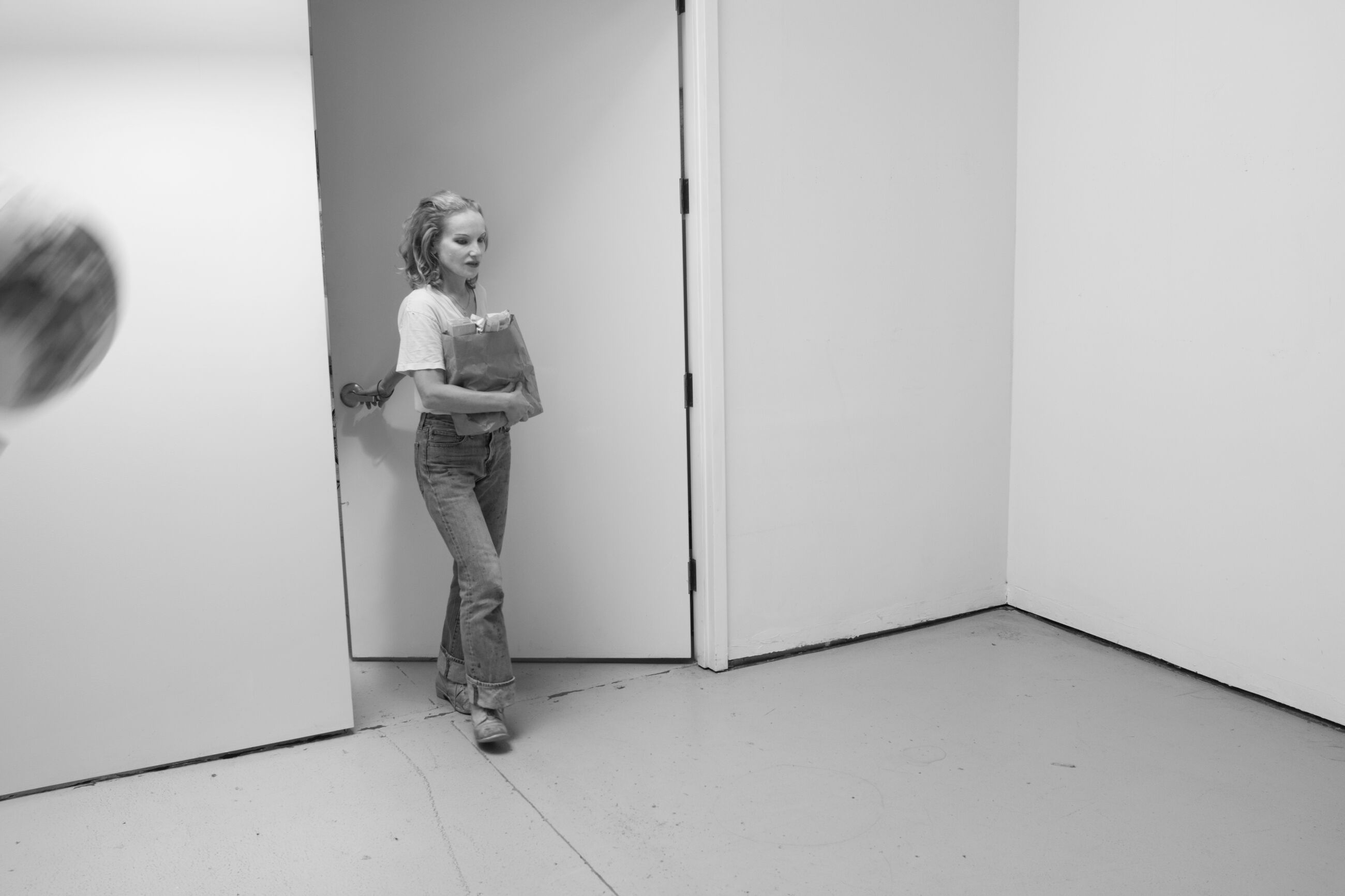Rita Ackermann
Splits: Printing | Painting
2 May – 26 July 2024
New York, 18th Street
On 2 May, Hauser & Wirth will present Rita Ackermann’s latest series of paintings and prints in simultaneous exhibitions spanning the gallery’s two West Chelsea locations. At 542 West 22nd Street, the artist will debut a suite of new canvases expanding upon the techniques, themes and imagery she has explored over the course of her career since the early 1990s, while at 443 West 18th Street she will unveil a series of complex large-scale silkscreens. Heralding a significant leap in her artistic practice, these prints represent a dramatic convergence of the technical processes of printmaking with Ackermann’s sustained exploration of form, movement and erasure.

Dr. Pamela Kort on Rita Ackermann’s exhibitions:
Splits: Printing | Painting
In the thick of bringing to canvas the metamorphic forms that would become the ‘Splits,’ Ackermann embarked on a new artistic endeavor, delving into the realm of printmaking. In the resultant seven large-scale silkscreens, which she produced in collaboration with master printer Keigo Takahashi, her concern with making manifest such images became imbued with a related objective: the transformation of paintings into prints, without recourse to the reproduction of a model. Though these silkscreens diverge from the compositional principles of the ‘Splits,’ like them they probe the boundaries of optical perception. To emphasize this, the exhibition includes two recent paintings. One of these—’The Rule of Nature’ (2023)—which belongs to the ‘Splits,’ even bears the marks of Ackermann’s concern with combining monotype printing with painting. Viewers who perceive that will nevertheless find it difficult to distinguish between the look of the other painting—’Misfit’ (2023)—and the silkscreens.

This visual feat owes just as much to the artist’s decision to approach the making of these silkscreens as though she were working on a canvas, as to any sleight of the hand enabled by their production. Ackermann began by layering drawings onto paper and then gradually superimposed gestural brush strokes, color stains and delicate droplets of pigment onto the underlying drawings, welcoming the occurrence of accidents through this process. This not only made the contrast between emerging and disappearing forms integral to many of her paintings visible, but also conveyed a sense of the centrifugal motion that frequently ensues in them. As such, those who contemplate these first silkscreens by the artist may well find themselves questioning whether the alleged split between printmaking and painting is, in fact, purely theoretical.

2 May – 26 July 2024
Rita Ackermann. Splits
Titled ‘Splits,’ Ackermann’s latest paintings mark a pinnacle in the artist’s ongoing concern with the creation of dynamic, moving images. In these canvases, forms cascade downward and upward, at times merging seamlessly into one another
On view at New York, 22nd Street
About the Artist

Rita Ackermann
Rita Ackermann (b. 1968, Budapest, Hungary) immigrated from Hungary to New York in 1992, where a formative body of work positioned her within the cultural zeitgeist of the city. At the outset of her early career, a breakthrough series of paintings—composed of bold contour lines and semi-transparent bodies—anticipated aesthetic and technological shifts that have proven remarkably timeless.
Though Ackermann’s works may be recursive, they are anchored by improvisation, disruption, and formal negation—the protein of her aesthetic. These elements were shaped in part by her engagement with cinema, particularly the films of Jean-Luc Godard and the theories of Paul Virilio, who viewed perception as structured by montage and fragmentation.
Ackermann’s paintings continue to bear the imprint of visual phenomena—not only in their subject, but in their structure. Images operate cryptically, fractured and charged with interior volatility. Their continual appearance and disappearance suggest that suspension, rather than development, is central to her method. The upshot has been a sustained visual practice that subtly confronts the tensions of the present.
Current Exhibitions
1 / 12




















